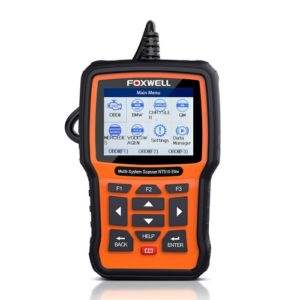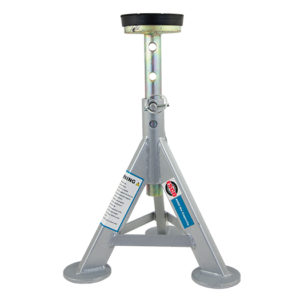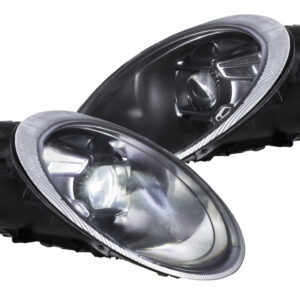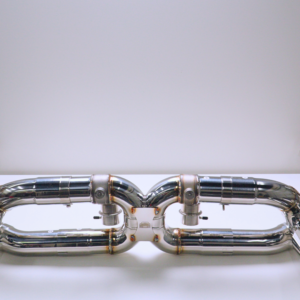Many Porsche models can be equipped with Porsche Dynamic Chassic Control (PDCC), which actively adjusts the sway bars to keep the heavy vehicle flat in corners. To maintain this system, Porsche recommends replacing the PDCC reservoir every 6 years or 60,000 miles because the reservoir contains an integrated fluid filter, which needs periodic replacement.
This is a super easy DIY, but there are not any videos covering the procedure. However, to get an overview, check out this power steering fluid change DIY from the YouTube channel, CarFanatic. The important part to pay attention to is how to remove the power steering fluid reservoir. The PDCC reservoir is the same exact part, but is located just above the power steering fluid reservoir. While the video shows you how to change the power steering fluid on a 957 Cayenne, the same process will work on the 958 Cayenne. Detailed steps, parts, and tools required can be found below.
Step 1: Prepare your vehicle and work area.
- Make sure your engine is cool, so you don’t burn yourself.
- Park your car on a flat surface.
- Gather required tools and parts.
- Put on gloves and eye protection.
- Open hood and locate the PDCC reservoir on the left-hand side of the engine bay as shown in this video from TOM RAST.
Step 2: Gain access to the PDCC reservoir.
- As shown in the video from gtpiston04, remove the passenger and driver side plastic panels which are held on by plastic clips that you can remove with a flat head screwdriver.
- Remove the plastic engine panel along driver’s side fender; it is just held on by a few plastic clips, which can be removed with a flat head screwdriver.
- You should now see the PDCC reservoir, which is just above the power steering fluid reservoir.

Step 3: Remove the PDCC reservoir.
- Remove the PDCC reservoir from the mounting bracket by removing the one nut, then lifting the reservoir up and out.
- However, do not disconnect the hoses or remove the PDCC reservoir cap. We do not want the PDCC fluid coming out.
Step 4: Drain the PDCC reservoir.
Check out this video to get an idea of how to remove the hose clamps. Details can be found below:
- Use pliers to remove the hose clamps on the two PDCC hoses; just move the clips down on the hoses, so you can get them out of the way.
- Loosen the larger hose, but do not completely remove it; you may need to gently pry it loose using a plastic trim remover tool and WD-40 as lubricant.
- Before completely disconnecting the larger hose, have a plastic container ready to catch the PDCC fluid.
- Keep the larger port on the PDCC pointed upward as you remove the larger hose, so fluid doesn’t come out.
- Once you have the larger hose off, place your container the container over the port on the PDCC reservoir; then turn the PDCC reservoir over and twist off the cap to allow the fluid to drain.
- Once your PDCC fluid has been drained, place a rag under the reservoir and remove the remaining smaller hose.
Step 5: Install your new PDCC fluid reservoir by following the prior steps in reserve.
Step 6: Top off the PDCC reservoir with new fluid.
- Once the new PDCC is installed, add Pentosin CHF 202 power steering fluid.
- Measure the level using the built in dipstick in the cap.
- Save the Pentosin CHF 202 because you may need it in the future to top off your PDCC reservoir or power steering fluid.
- Do not re-install the plastic engine cover panel yet; take your car for a short drive then re-check the fluid level.
Step 7: Re-install everything.
- Re-install the plastic panel.
- Clean up your work area and put your tools and supplies away.
- You’re all done!






